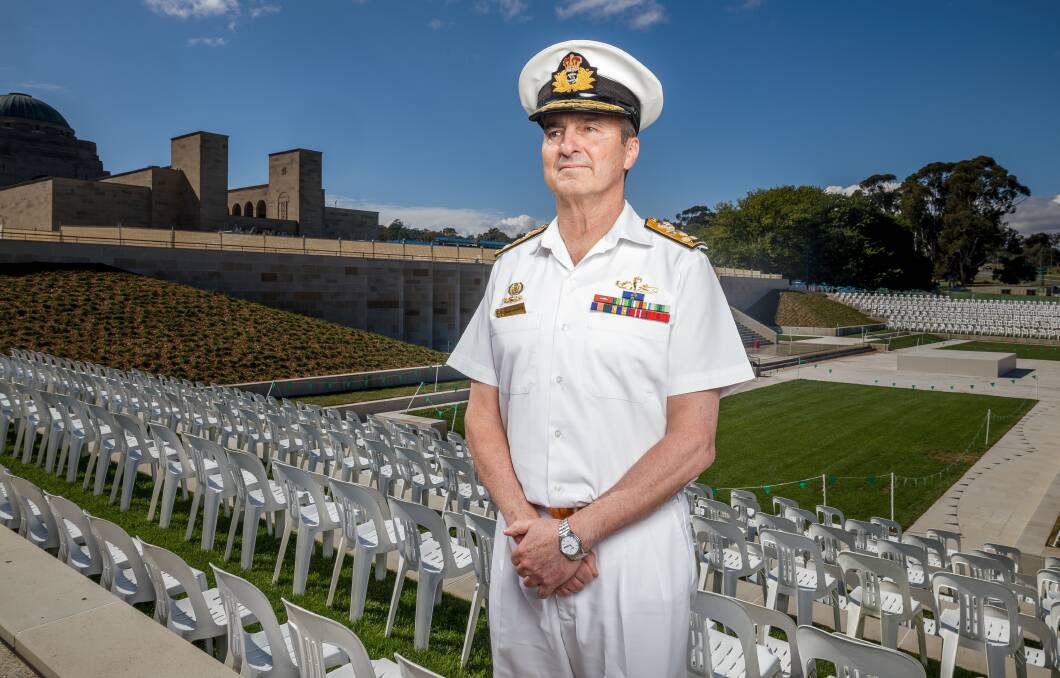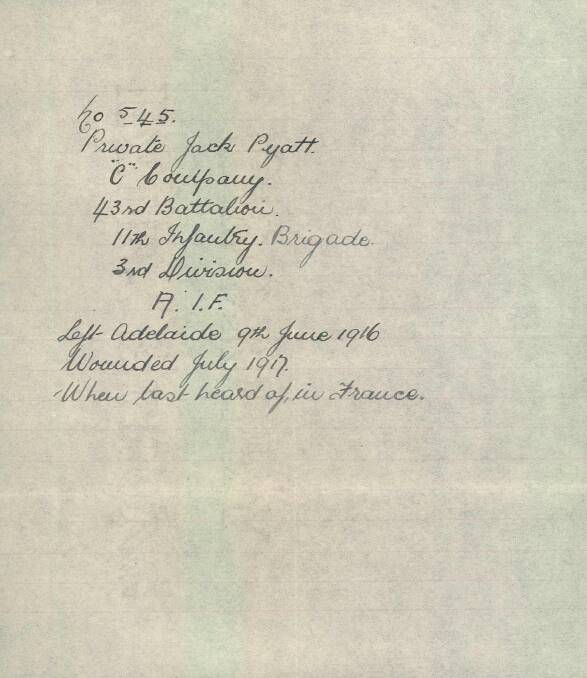When the new chief of the Australian military was six-years-old, he saw what war meant.
Both the grandfathers of David Johnston fought in the First World War. One of them landed at Gallipoli on the first awful day. Both fought in the trenches. Both survived, one of them despite being wounded twice in France.
As a six-year-old, Vice Admiral Johnston visited the wounded grandfather in Adelaide and saw the scars on his back and shoulder.
"I didn't understand as a child but the impact of his service was visibly clear," the incoming Chief of the Defence Force said.
"He had these injuries in his back and he wore leg braces but as a child I wasn't able to contemplate the impact of his service and what it meant to his physical and mental well-being," he told The Canberra Times.
"But over my career, I came to appreciate what the impact of service is to people who had suffered injuries and to the families of those closest to them."
As he gives the address at the Dawn Service on Anzac Day on Thursday, that concept of service will be central, a concept he got from the sacrifice of his grandfather, Private John "Jack" Pyatt.
The Red Cross archives have a file of documents from the time about the soldier. They follow his progress from battlefield to hospital to battlefield again and to hospital again - and then home.

Some are official and formal, cold even: "Left Adelaide, 9th June, 1916. Wounded July 1917. When last heard of in France" - and then there is a long and excruciating blank space indicating his fate was unknown.
But Private Pyatt's mother (and so the new Defence Chief's great grandmother) then learnt that her son had been wounded. He was described as suffering from "GSW (gun-shot wounds) to the shoulder and back".
He had these injuries in his back and he wore leg braces but as a child I wasn't able to contemplate the impact of his service and what it meant to his physical and mental well-being.
- Vice Admiral David Johnston
He recovered once - and was sent back to the front where he was wounded a second time. He was finally discharged from the Auxiliary Australian Hospital in Kent in the south of England on July 18, 1918 - four months before the end of the war.
When he returned he made that indelible impression on the man who, a century later, would have the fate of Australia's army, navy and air force servicemen and women in his hands.
Vice Admiral Johnston who joined the Navy when he was 16 takes over as Chief of the Defence Force in July, the first naval officer to take the country's top military job in two decades.

When he was appointed, the prime minister described him as "a proven leader with the experience, intellect and resolve to lead the ADF in a complex and rapidly changing global strategic environment".
Vice Admiral Johnson is aware of the "complex and rapidly changing global strategic environment".
He does not mention the word "China" and the growing tensions as its forces flex their muscles, particularly at sea.
But he does indicate where his and Australia's priorities lie: "The maritime is particularly important at this moment in our nation's history because of the key role which the government has asked of defence to protect the nation: the sea lines of communication which we trade on, and which have important infrastructure which our telecommunications cables run through.
"We are connected by our maritime environment to the regions and the nations around us."
He spent much of his career at sea, including on warships off the Middle East in 2010, but in recent years he has been at the heart of refashioning Australia's military strategy.
Defence minister Richard Marles said that as the deputy to to Chief of the Defence Force for the last six years, Vice Admiral Johnston had "been at the very heart of reshaping the Australian Defence Force.
"He has been in the engine room of all the work that we have done over the last two years, and this is a moment where we need a safe pair of hands and deep experience to take our Defence Force forward, and there is no person who meets those qualities better."
Vice Admiral Johnston believes his wide experience - on board ships and behind a desk - makes him a good fit for the top job.
"What I bring to the top job is both my naval background and a deep understanding of the whole of the ADF," he said on the parade ground where Anzac Day will be celebrated on Thursday.
He said he continues to be profoundly moved by Anzac Day, particularly the Dawn Service. "As a sailor, I've had many dawns on the bridge of a ship. It is extraordinary because of the quiet."
He talked with passion of his duty. Leaders lead, he said "but as important is the notion that they serve the people who work for them and we serve the nation".
Service, he said, was the first of the defence values "because it's that important".
And is he looking forward to the new job?
"Yes", he said without a pause or a caveat.
Those who need help with trauma can call:
- Defence All-hours Support Line (ASL) - 1800 628 036
- Defence Member and Family Support - 1800 624 608
- Open Arms Veterans & Families Counselling - 1800 011 046


